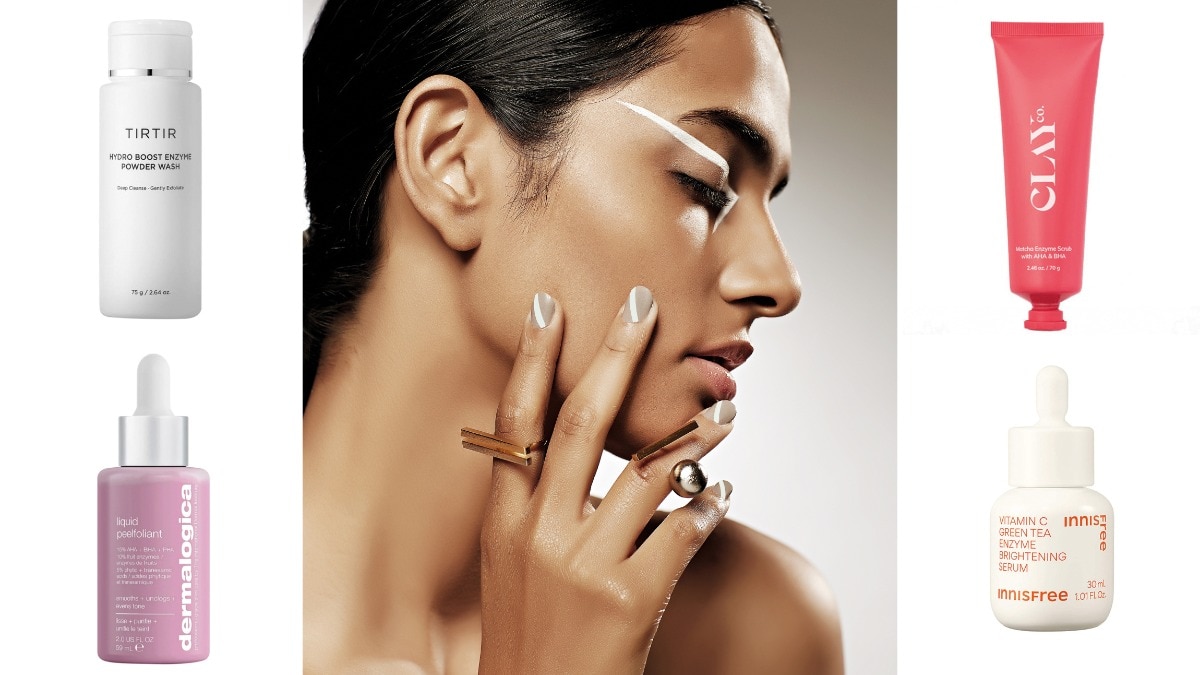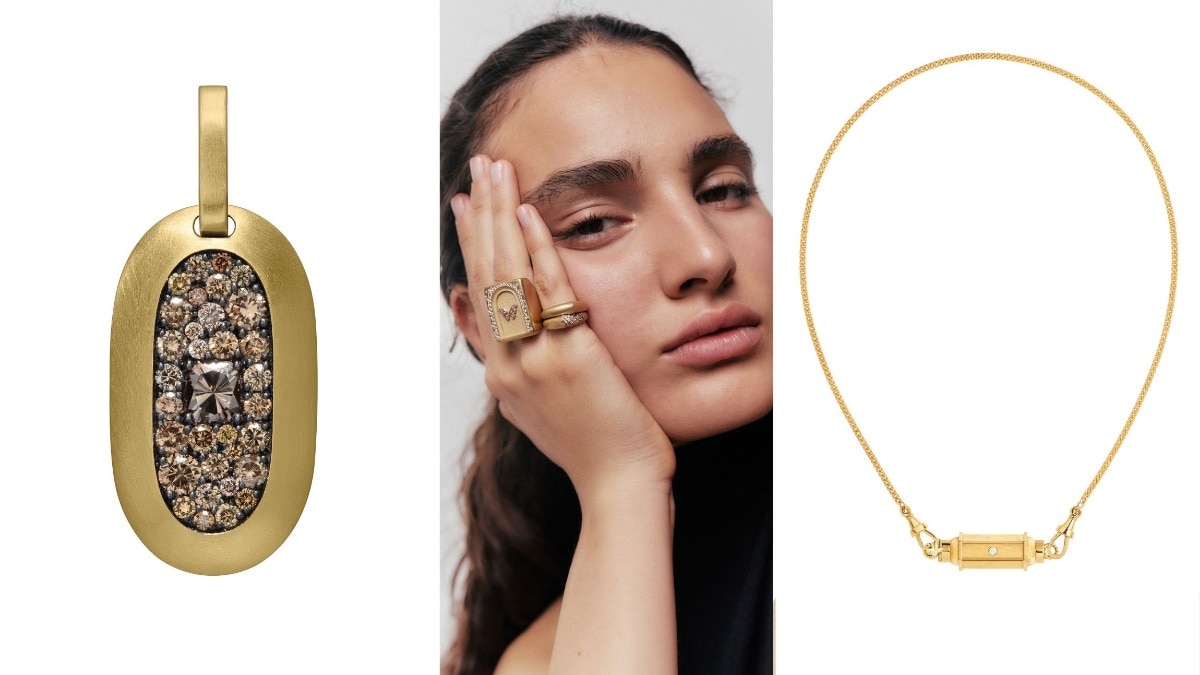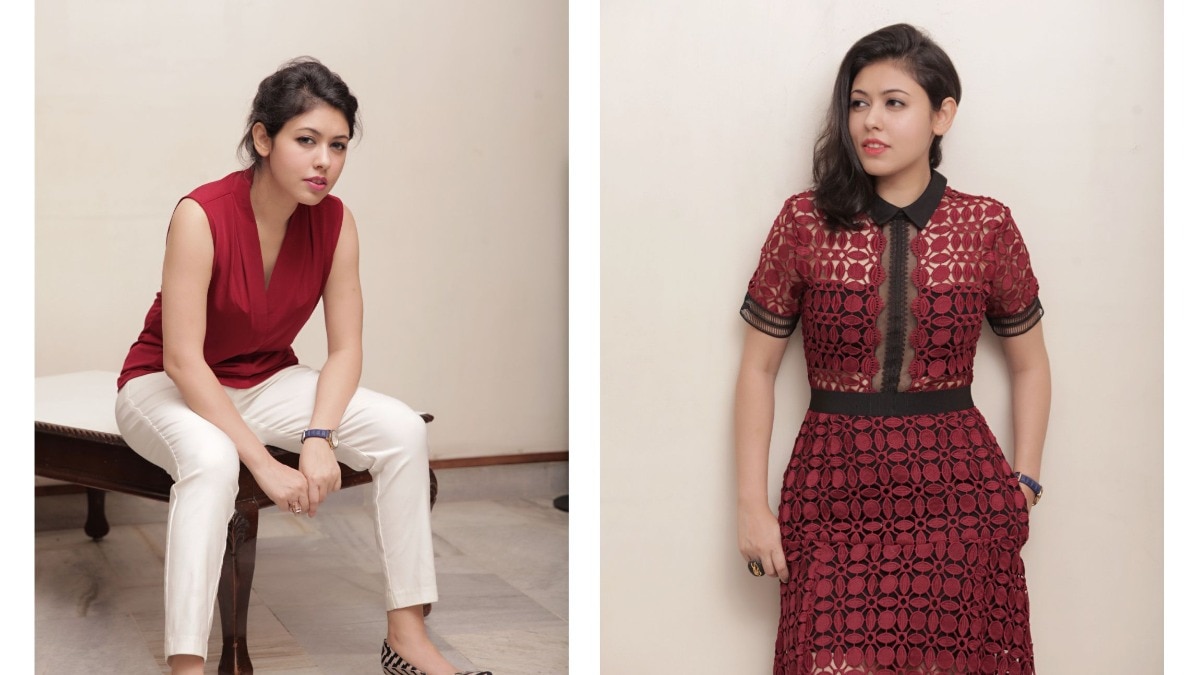“Ozempic Face” is real. But there’s skincare for that
Accelerated skin aging is a side effect of GLP-1 medications, but experts say there are products that can help.


The GLP-1 revolution is transforming both waistlines and bathroom vanities. With the growing popularity of medications like Ozempic, Mounjaro, and Wegovy—initially prescribed for people with Type 2 diabetes but now commonly used for weight loss—a new beauty concern is emerging: skin quality.
“With typical weight-loss-related skin laxity, the skin quality remains more intact, but the skin of patients on GLP-1 medications often seems to have gone through an accelerated aging process,” says R. Sonia Batra, a dual board-certified dermatologist and micrographic dermatologic surgeon in Santa Monica, California. It’s often dubbed “Ozempic face” on social media, and Batra says the telltale signs include a sunken, gaunt appearance due to volume loss, thinning skin with reduced elasticity and recoil, deeper wrinkles, and increased dryness and sensitivity.
With fat transfers, facelifts, fillers, and skin-tightening treatments (such as Sofwave, EmFace, and radiofrequency microneedling) often out of budget for many, consumers are seeking non-invasive topical alternatives. And beauty brands are answering the call.
I believe we’re witnessing the emergence of an entirely new category in skincare and beauty overall, one specifically designed to address the aesthetic side effects of GLP-1 usage and rapid weight loss,” says Marc Ronert, a European board-certified plastic surgeon and co-owner of Image Skincare. In April, he launched Vol.U.Lift, a topical treatment targeting four of the most common GLP-1-related concerns: facial deflation, deep wrinkles, dehydration, and loss of density.
The formula combines ingredients such as L-ornithine amino acid to stimulate collagen production, bakuchiol to smooth fine lines, hyaluronic acid for skin-plumping moisture, botanical kangaroo-paw extract to tighten, and biomimetic plant-collagen fragments to lift and firm. It also incorporates a smart encapsulation system to deliver potent antioxidants—including vitamin C, ectoin, and astaxanthin-rich microalgae—into the skin to fight oxidative stress and reinforce the skin barrier.
Just weeks later, Julius Few, a board-certified plastic surgeon and the founder of the Few Institute in Chicago, debuted DermaReverse, further solidifying the emergence of this new skincare sector. The supercharged serum was clinically tested over six weeks on GLP-1 users and showed significant improvements in elasticity, hydration, tone, and texture.
Few’s inspiration came from the operating room, where he noticed unusual changes in the skin behavior of GLP-1 patients during and after a facelift. “It was almost like a rubber band that had been worn out,” he says. Few suspects these effects are due to not just fat loss but also a disruption in cellular communication between skin cells and hormones, leading to dryness, accelerated wrinkling, and increased vulnerability to UV damage (i.e., redness and hyperpigmentation).
DermaReverse aims to stimulate skin cells and reestablish pathways in the skin that GLP-1 drugs switch off. It combines a bioavailable form of retinoic acid with a peptide complex, botanical antioxidants, and hyaluronic acid to stimulate the skin’s natural growth factors. Unlike traditional retinoids or retinol, it penetrates the skin quickly to prevent irritation and can be used both day and night.
Some beauty insiders remain skeptical. Ron Robinson, cosmetic chemist and founder of skincare brand BeautyStat, calls Few’s clinical trial “promising” but notes that many of the ingredients in both DermaReverse and Vol.U.Lift are already common in skincare. This surge of launches, he suggests, may have more to do with savvy marketing than true scientific innovation. Robinson says tried-and-true actives like retinol, vitamin C, peptides, and hydroxy acids remain the gold standard for firming, lifting, tightening, and brightening skin.
These products also haven’t put plastic surgeons and dermatologists out of a job, at least not yet. “[Topicals] certainly aren’t going to restore lost fat to your face,” says Ava Shamban, a board-certified dermatologist with practices in Beverly Hills and Santa Monica. Faryan Jalalabadi, a board-certified plastic surgeon in Beverly Hills, agrees: “No matter what you do on a skincare level, if you have volume loss and tissue laxity, you will always have less-than-great-quality skin,” he says, noting that fat is the richest source of stem cells in the human body.
Both physicians acknowledge that certain improvements—like boosting collagen and elastin—are feasible with the right actives. “GLP-1 medications likely change signaling in the skin that results in decreased skin scaffolding and cell renewal,” explains Batra. “If the ingredients in skincare are tailored to target and restore these pathways, they can offset some of these changes.” However, for patients who have lost a significant amount of weight or lost it very rapidly, she says in-office treatments may be necessary for “sufficient improvement.”
Both Ronert and Few see their products not as replacements for procedures but as powerful adjuncts and, ideally, as proactive measures. “Many people go on [GLP-1 drugs] and notice issues three, six, or nine months later and try to play catch-up,” says Few. The key is to start early and minimize or prevent skin-related side effects altogether.
Even people not taking GLP-1s may benefit from these formulas. Anyone experiencing facial volume loss could see results, says Ronert. Few adds that his serum could help improve thin, delicate skin, particularly for those dealing with eczema, psoriasis, or long-term use of prescription anti-inflammatory medications.
Still, a recent KFF poll found that one in eight Americans have tried GLP-1 therapy, and J.P. Morgan projects that as many as 30 million U.S. adults could be on a GLP-1 by 2030. Whispers of more launches in this category are circulating as major beauty brands race to capitalize on the moment. It remains to be seen whether GLP-1-specific skincare will grow to rival categories like acne or anti-aging, but demand is on the rise.
Lead image: Getty Images
This article first appeared on Harper's Bazaar.com
Also read: How to create the trending guava-girl glow for the perfect tropical vacay vibe
Also read: From the Riviera bob to golden hour blonde, five summer hair trends for a new season refresh










